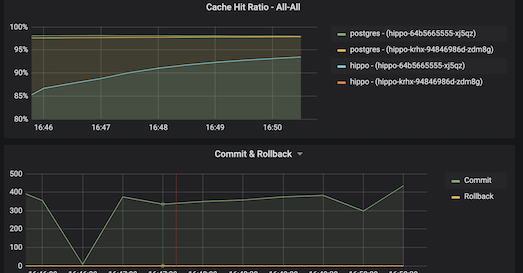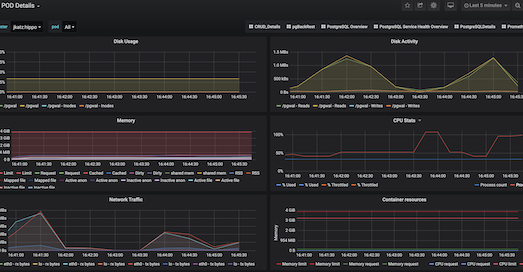Posts about Production Postgres
Tuning Your Postgres Database for High Write Loads
As a database grows and scales up from a proof of concept to a full-fledged production instance, there are always a variety of growing pains that database administrators and systems administrators will run into.
4 min readPostgreSQL Monitoring for App Developers: Alerts & Troubleshooting
When should you be alerted about issues in your PostgreSQL clusters? How do you troubleshoot them? What are some typical solutions?
10 min readPostgreSQL Monitoring for Application Developers: The DBA Fundamentals
What are some PostgreSQL monitoring stats that are typically used to monitor the health of your databases?
10 min readPostgreSQL Monitoring for Application Developers: The Vitals
What are some of the key stats to look at to ensure your PostgreSQL cluster is healthy? How can you use this stats to diagnose the problem?
9 min readHow to Setup PostgreSQL Monitoring in Kubernetes
Set up turnkey monitoring for PostgreSQL clusters running on Kubernetes using the Postgres Operator!
4 min readSynchronous Replication in PostgreSQL
PostgreSQL has supported streaming replication and hot standbys since version 9.0 (2010), and synchronous replication since version 9.1 (2011).
9 min readPostgreSQL 13 Upgrade and Performance Check on Ubuntu/Debian: 1.6GB/s random reads
PostgreSQL 13 was released last week. I'm excited about this one, as the more mature partitioning plus logical replication features allow some long-requested deployment architectures
6 min readHidden Gems of PostgreSQL 13
Which hidden gem features in Postgres 13 can have a big impact?
6 min readPostgreSQL Node Metrics: Don't Fly Blind
Monitor your PostgreSQL container node and get host metrics with the Postgres extension pgnodemx.
13 min readIntroducing the Postgres Prometheus Adapter
To make it easier for anyone that wants to use Postgres as their backing store for Prometheus, we’re proud to announce the release of the PostgreSQL Prometheus Adapter.
5 min readWhy PostgreSQL 13 is a Lucky Release
See why PostgreSQL 13 is a lucky release as it adds features like incremental sort, parallel vacuum, and improves performance of B-tree indexes and more!
8 min readPreventing SQL Injection Attacks in Postgres
Learn about SQL injection attacks and how to prevent them in Postgres.
8 min readAnnouncing pgBackRest for Azure - Fast, Reliable Postgres Backups
Backups are a key staple of running any database. pgBackRest aims to be a fast, reliable, easy-to-use backup and restore solution with the ability to seamlessly scale to the largest databases.
3 min readSetup ora2pg for Oracle to Postgres Migration
An important part of performing a migration from Oracle to PostgreSQL is selecting the right tool for helping with the conversion between systems.
9 min readHow to Recover When PostgreSQL is Missing a WAL File
Creation and clean up of WAL files in the primary's pg_wal folder (pg_xlog prior to PG10) is a normal part of PostgreSQL operation. The WAL files on the primary are used to ensure data consistency during crash recovery. Use of write-ahead logs (also called redo logs or transaction logs in other products) is common for data stores that must provide durability and consistency of data when writing to storage. The same technique is used in modern journaling and log-structured filesystems.
14 min readControl Runaway Postgres Queries With Statement Timeout
A well tuned production Postgres database is capable of easily running thousands or up to hundreds of thousands of queries per second on a beefy instance.
4 min readOptimize PostgreSQL Server Performance Through Configuration
Learn the top 5 settings to tune once an install of PostgreSQL is completed to optimize performance.
5 min readHow To Migrate From Trigger-Based Partitioning To Native in PostgreSQL
Learn how to migrate PostgreSQL partitions that use triggers/inheritance/constraints to partitions to the native implementation in PostgreSQL 11 and above.
12 min readGuard Against Transaction Loss with PostgreSQL Synchronous Replication
Learn how to deploy PostgreSQL on Kubernetes with synchronous replication to guard against losing transactions.
17 min readMigrating from Oracle to PostgreSQL: Tips and Tricks
Migrating from one database to another is inherently new technology and can raise a multitude of questions.
9 min read
.png)





.png)


.png)



.png)


-1.png)
%20(1).png)





